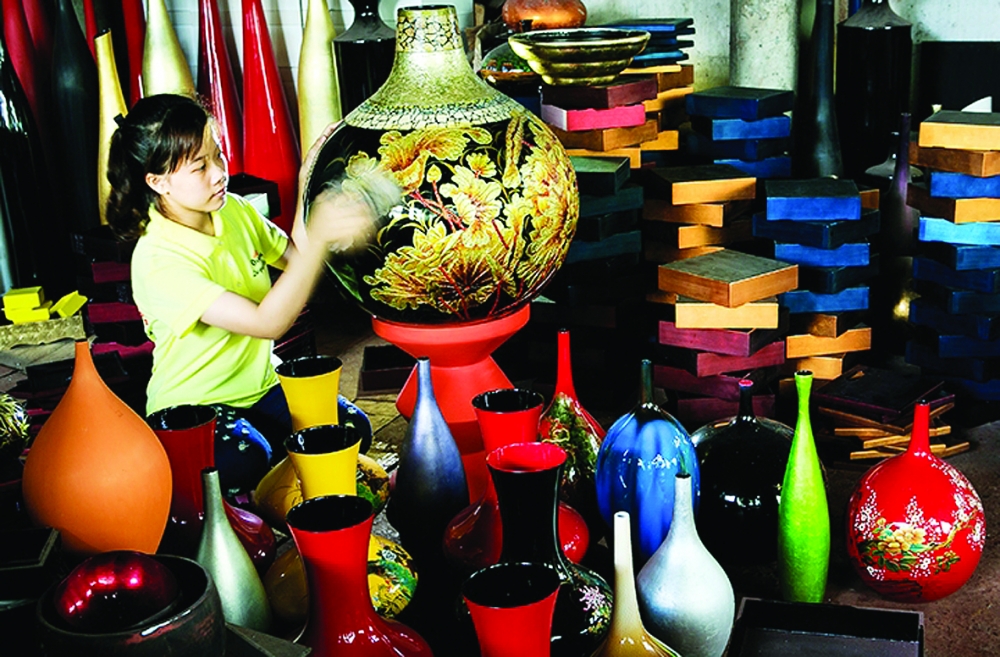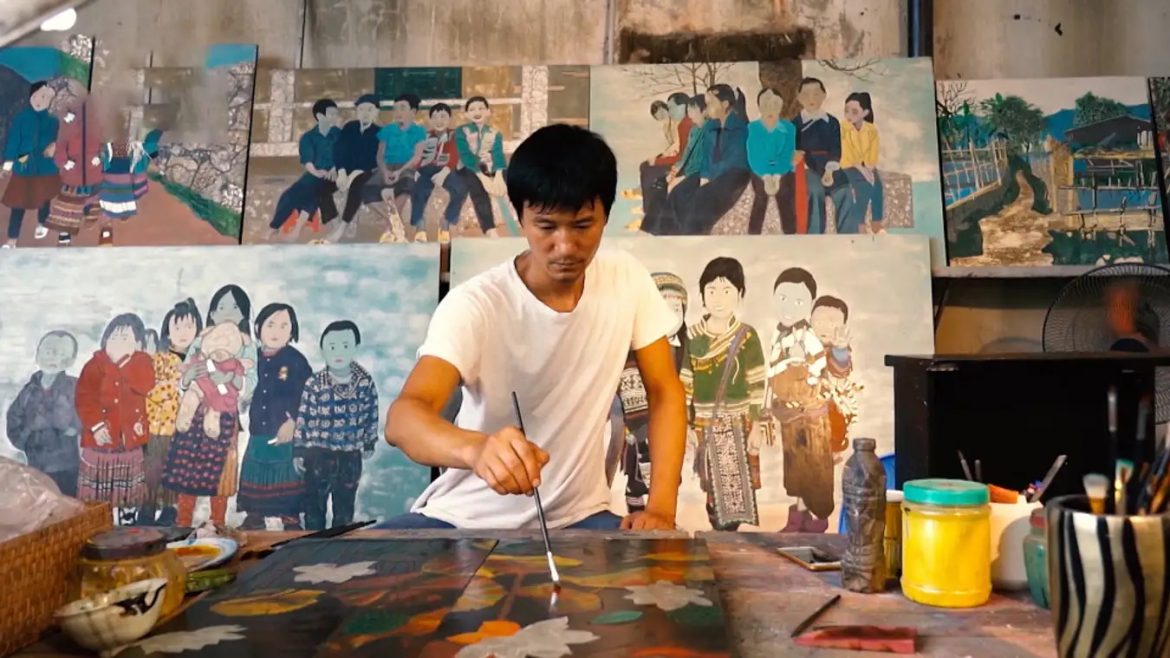Nestled amidst the verdant valleys and tranquil rice paddies of Northern Vietnam, 3 villages are living testaments to the skills and artistry passed down through generations
Vietnam, a country rich in history and culture, offers a diverse range of experiences to its visitors. While bustling cities and breathtaking landscapes often steal the spotlight, the true essence of Vietnamese heritage lies hidden in its age-old traditions, showcased beautifully in its many handicraft villages.
In this journey, we venture into 3 unique handicraft villages of Northern Vietnam, each with its own special story and legacy.
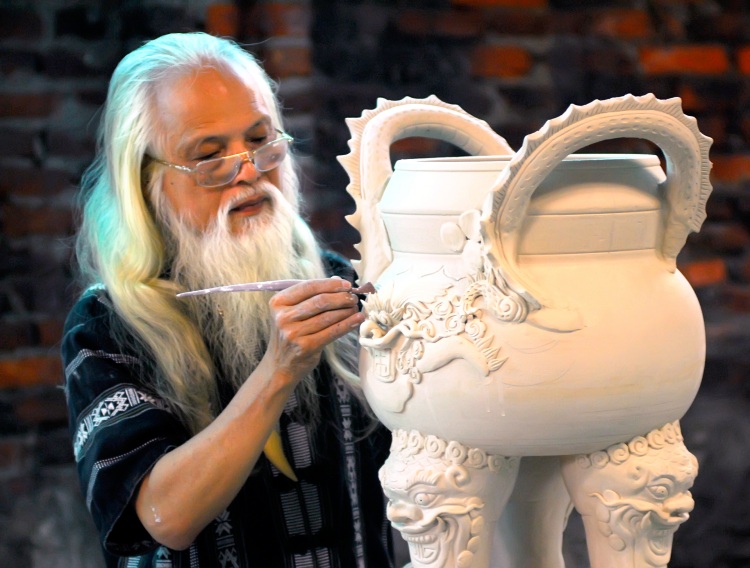
1. Bat Trang Pottery Village – Where Tradition Meets Innovation
Nestled just 13 kilometers southeast of Hanoi, Northern Vietnam, Bat Trang Pottery Village boasts a history stretching back over 700 years. A testament to its longevity, the village remains a vibrant hub of pottery production, attracting both local and international visitors.
The Artisans of Bat Trang – Northern Vietnamese Art
As you wander through the narrow cobbled streets, you’ll encounter generations of skilled artisans, their weathered hands meticulously shaping clay into everything from exquisite teacups and decorative vases to large-scale ceramic sculptures.
The artisans here have honed their craft over decades, often starting as young apprentices under the guidance of seasoned masters. This mentorship ensures that traditional techniques are preserved while also allowing for personal artistic expression.
The community spirit in Bat Trang is palpable; families often work together in workshops, passing down knowledge and skills from one generation to the next. The artisans take immense pride in their work, viewing pottery not merely as a trade but as an art form that embodies their cultural identity.
Each piece tells a story, reflecting the artisan’s creativity and the village’s rich heritage. And this is the most famous handicraft village in Northern Vietnam.
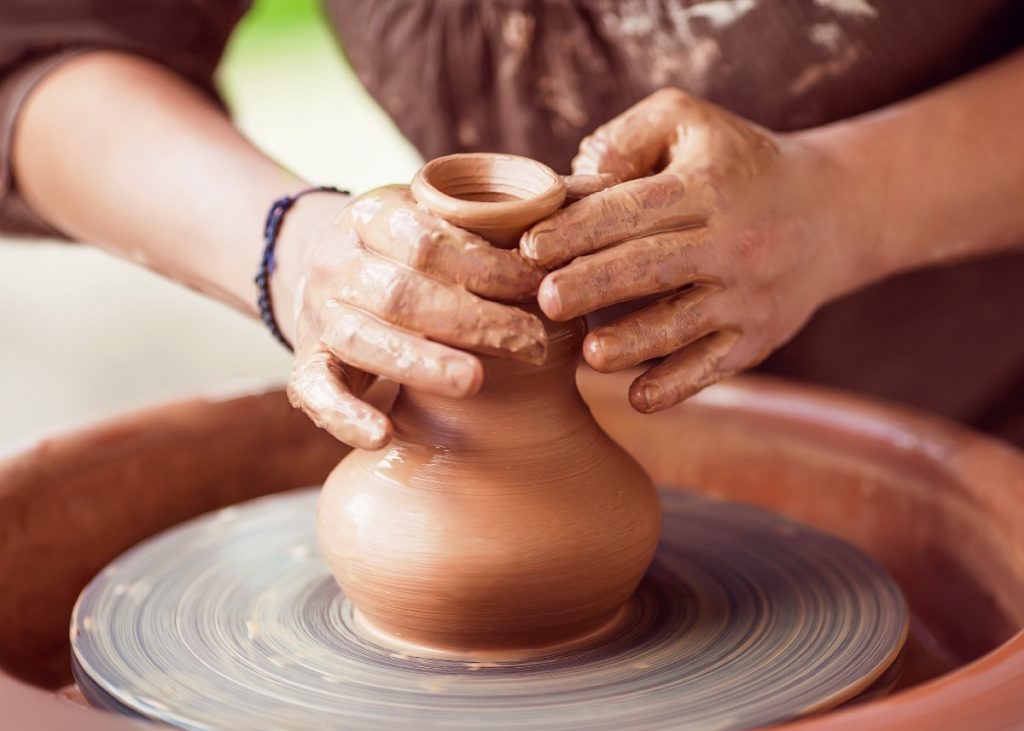
Traditional Techniques and Modern Innovations
Bat Trang is renowned for its traditional pottery techniques, including wheel throwing and the meticulous application of glazes. Visitors can witness these processes firsthand, observing how raw clay is transformed into beautiful works of art. The sound of the potter’s wheel spinning and the sight of artisans expertly shaping their creations create an immersive experience that connects visitors to the heart of Northern Vietnam’s craftsmanship.
While the village has been a bastion of tradition, it has also embraced innovation. Younger generations are incorporating contemporary designs and exploring new mediums, resulting in a fusion of old and new.
This evolution is evident in the modern art studios that have emerged within Bat Trang, adding a contemporary twist to the village’s craft. The blending of traditional techniques with innovative designs has attracted a new wave of artists, ensuring that Bat Trang remains relevant in today’s art scene.
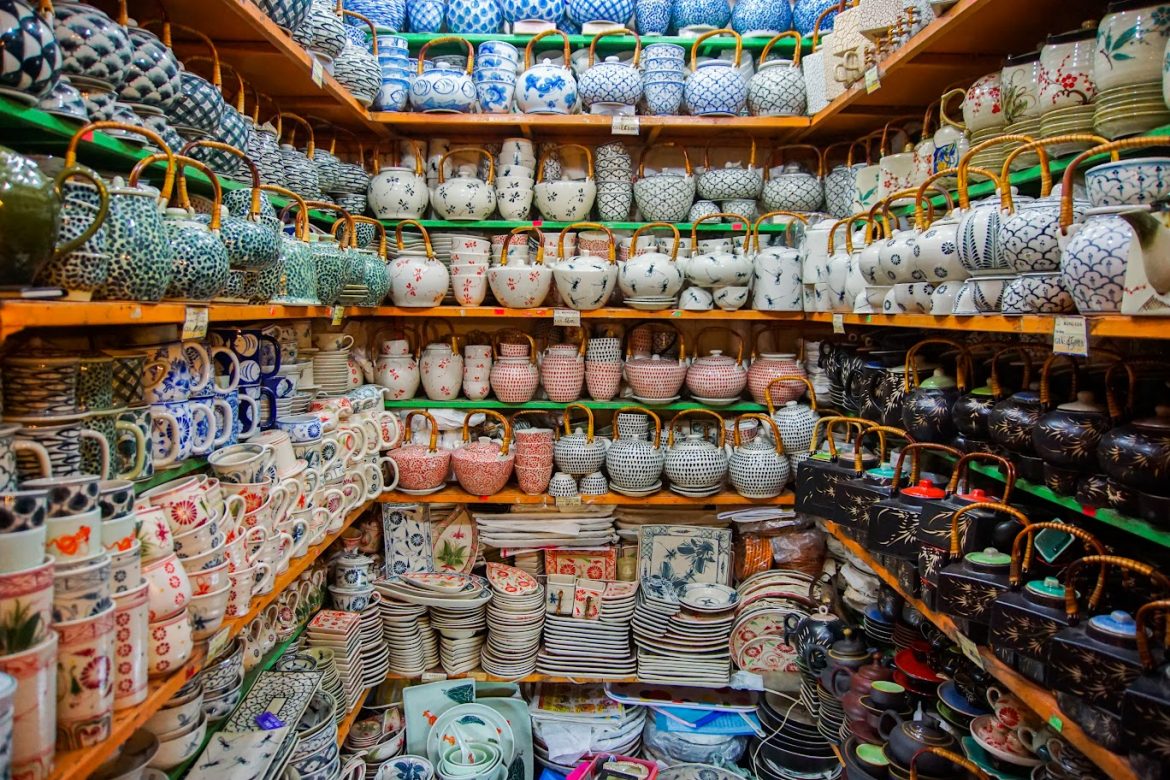
Bat Trang offers a wide variety of beautiful products range from traditional to modern
Key Experiences in Bat Trang
One of the highlights is the opportunity to participate in pottery workshops, where you can learn the techniques firsthand and create your own unique piece of pottery. These workshops are designed for all skill levels, making them accessible and enjoyable for everyone.
Exploring the village is another must-do activity. As you wander through the winding alleys, you’ll admire the traditional houses and pottery workshops, each exuding charm and character.
The village is also home to numerous shops selling a wide array of pottery items, from delicate teacups to ornate decorative objects, providing ample opportunities to find a piece of Bat Trang to take home, serving as a testament to their visit to the cultural heritage of northern Vietnam.
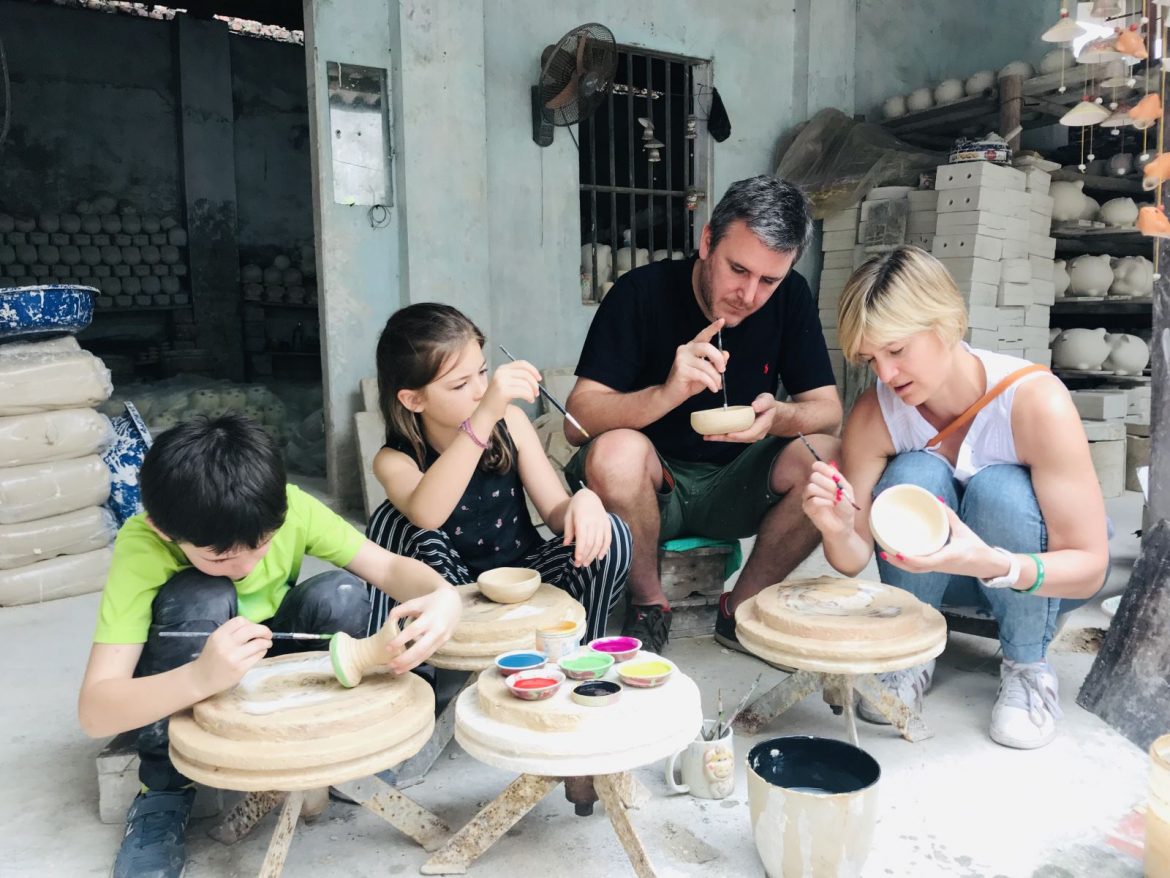
2. Chuong Conical Hat Village: A Timeless Icon
Nestled in the Northern Vietnam, Chuong Village has been synonymous with the iconic conical hat for centuries. This unassuming village has perfected the art of transforming ordinary palm leaves into elegant and functional headwear that has become an enduring symbol of Vietnamese culture.
The History of Chuong Conical Hat Village
As an ancient craft village in Hanoi, Northern Vietnam, no one knows exactly when Chuong village started making conical hats. However, according to the village elders, the village began producing hats in the 8th century. At that time, Chuong village was known as Trang Thi Trung and specialized in making various types of hats for almost all different social classes.
Over the centuries, the craft of making conical hats in Chuong village has flourished. This tradition has been passed down through many generations, making the village one of the most renowned conical hat producers in Hanoi.
Today, more than 4,000 households in Chuong village are involved in this craft, offering a wide variety of affordable and diverse products to both domestic and international customers. Here is the center of conical hat production in northern Vietnam.
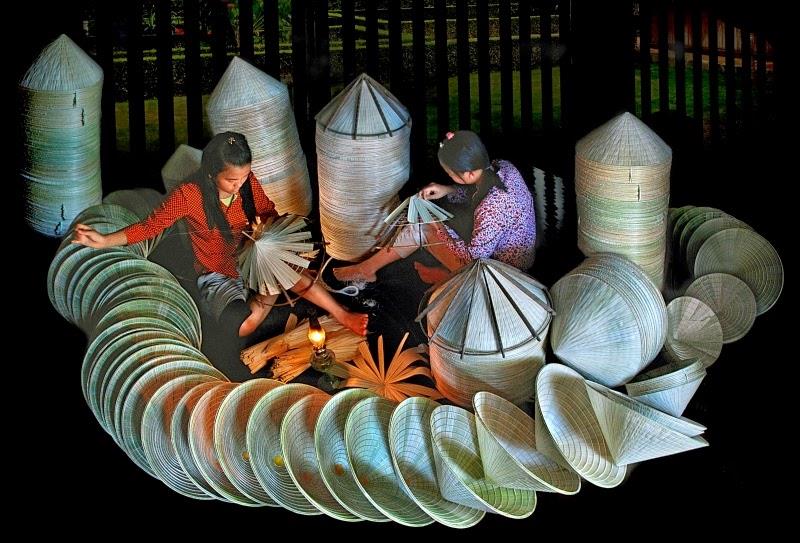
What is special about Chuong village conical hats?
When you visit Chuong village, you can directly witness the production process of conical hats. It is a traditional craft rather than a commercial enterprise, so the villagers do not keep their techniques a secret. The main materials for making these hats are fresh palm leaves imported from the provinces of Quang Binh and Quang Tri, while the thread and hat frames are made from locally sourced bamboo.
The creation of a conical hat is a meticulous process. Skilled artisans select the finest palm leaves, carefully drying and softening them before weaving them into the hat’s distinctive shape. The bamboo frame provides the structure, while lacquer finishes enhance the hat’s durability and aesthetic appeal.
Beyond its functional purpose as sun protection, the conical hat holds deep cultural significance in Vietnam. It’s a recurring motif in art, poetry, and film, embodying the grace and elegance of Vietnamese women.
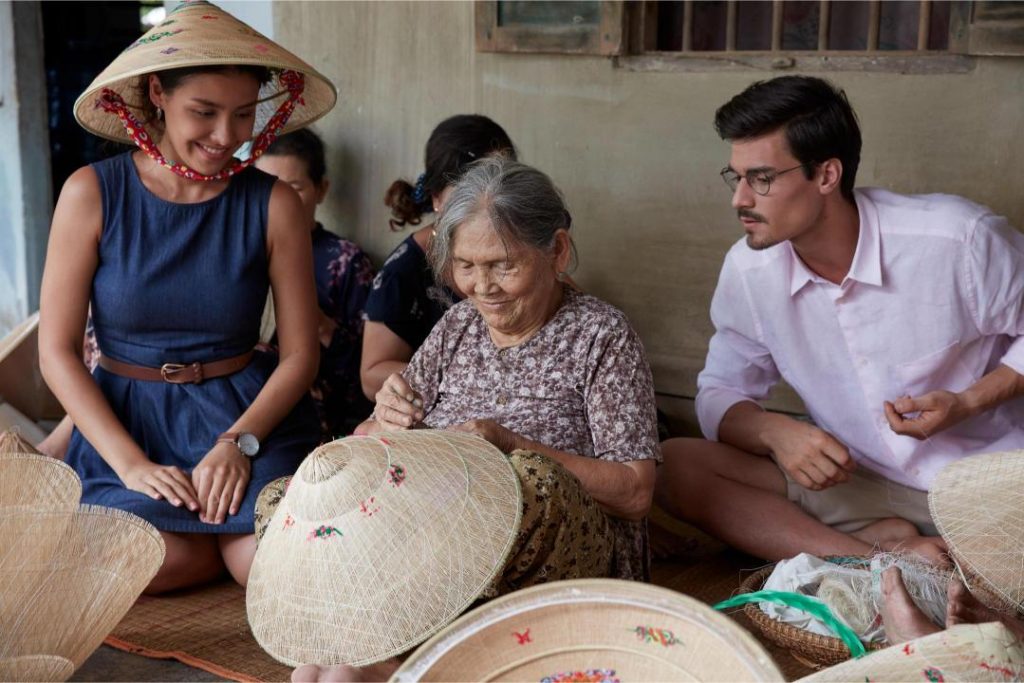
Foreign tourists are extremely fascinated when they see the artisans making conical hats in Chuong village.
Traveling to Chuong Conical Hat Village
A visit to Chuong Conical Hat Village offers a unique glimpse into the traditional Vietnamese craft of hat-making. The warm and welcoming locals are eager to share their skills and stories, making your experience both educational and memorable.
In addition, when you visit Chuong village, you also have the opportunity to participate in the village’s traditional festival, which lasts for three days from the 9th to the 11th of the 3rd lunar month.
Chuong Market is a must-visit spot in the village. The market operates daily, but the conical hat market is held six times a month on the 4th, 10th, 14th, 20th, 24th, and 30th of the lunar month. The market fair is a distinctive cultural feature of northern Vietnam.
Whether you’re looking to buy an authentic Vietnamese conical hat or simply immerse yourself in a rich cultural tradition, Chuong village is a must-visit destination in northern Vietnam and the country as a whole.
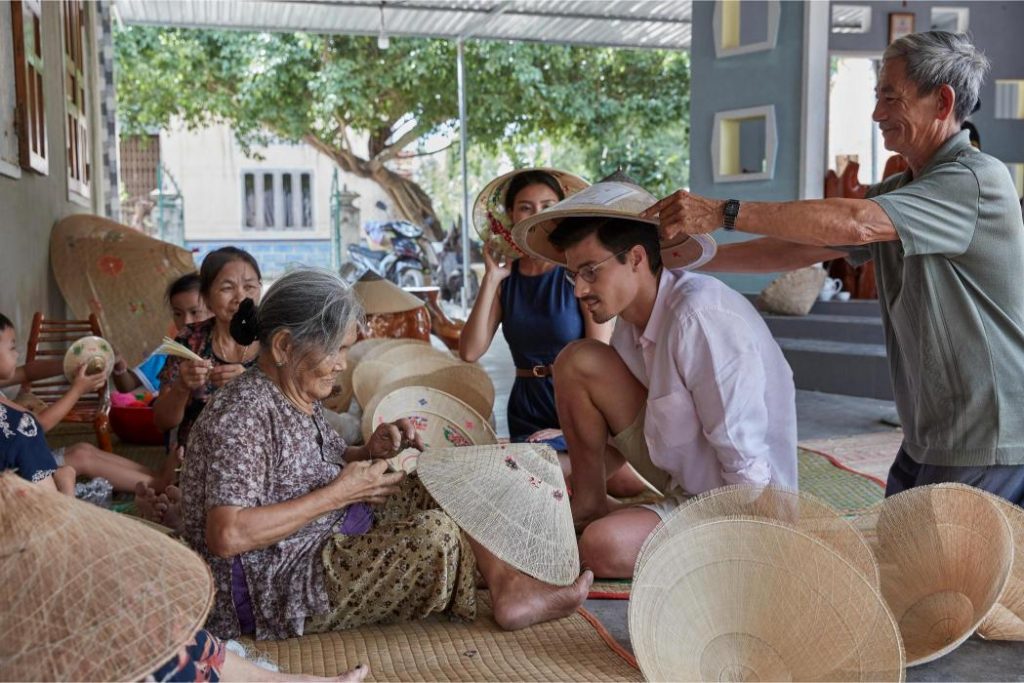
The experience of making conical hats is an unforgettable memory for every tourist
3. Ha Thai Lacquerware Village: Where Art Meets Craftsmanship
In northern Vietnam, while the history of Ha Thai lacquerware may not be as long-standing as some other traditional crafts, it has made a significant impact over the years. Today, Ha Thai lacquerware is well-known and has become a cultural and artistic treasure in Vietnamese life.
Introducing Ha Thai Lacquerware Village
Conclusion
A journey through these Northern Vietnam handicraft villages is not just a cultural experience; it’s a journey into the heart of Vietnam, revealing the enduring spirit of Vietnamese artistry and the importance of preserving tradition. These villages are a testament to the resilience and adaptability of Vietnamese culture, showcasing the beauty of craftsmanship and the importance of passing knowledge down through generations.
Lux Travel DMC hopes this article will be useful to you, helping you gain deeper insights into the traditional craft village culture of northern Vietnam.
